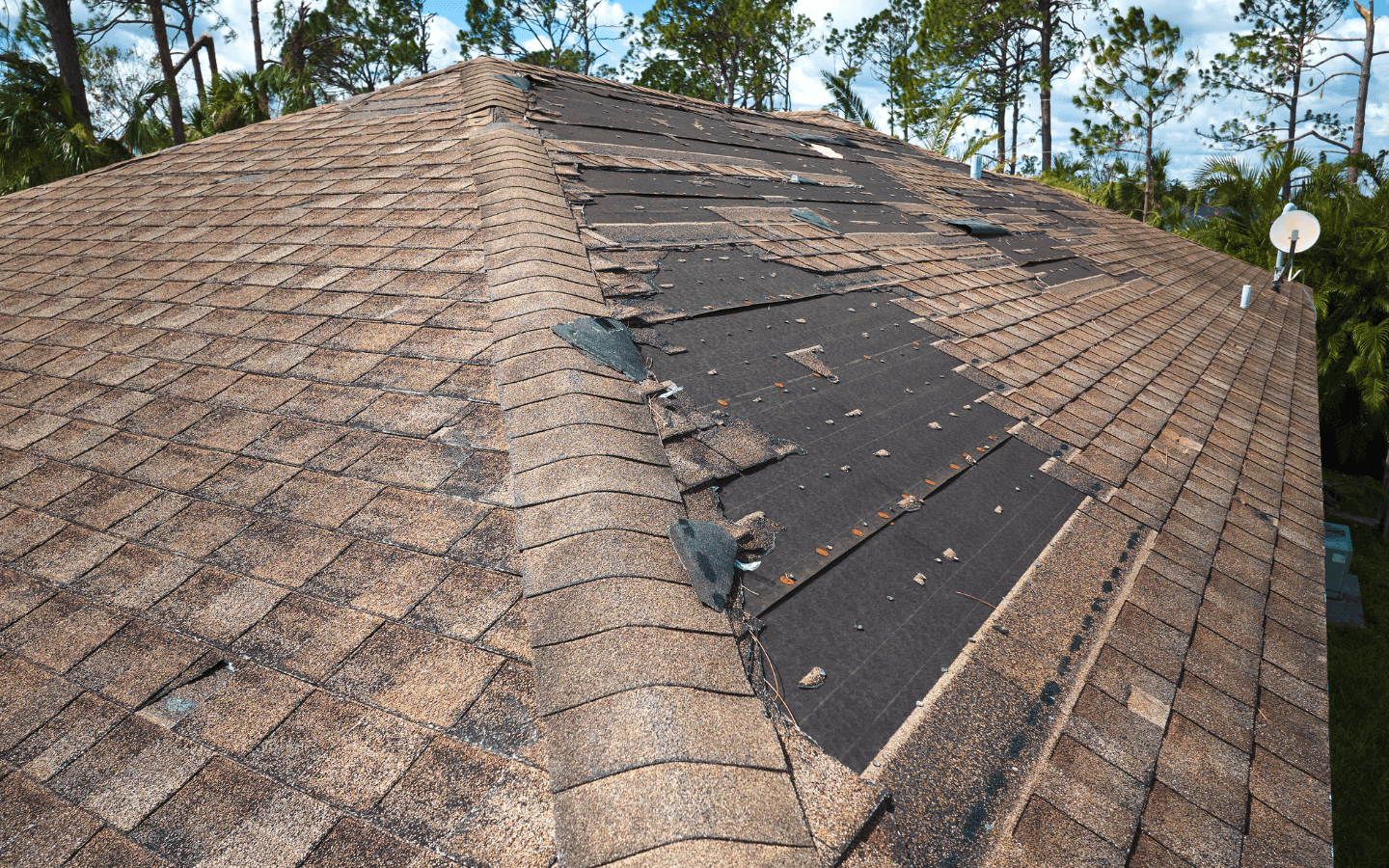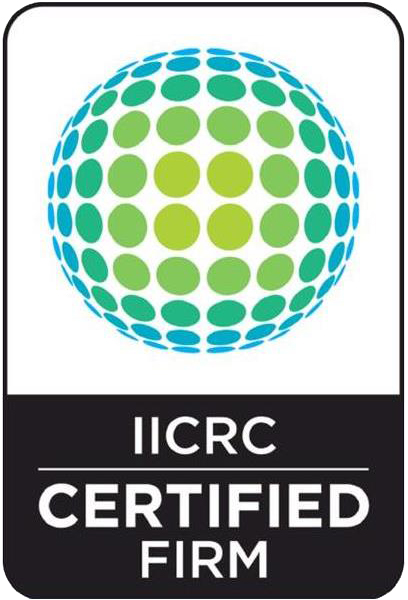High winds can wreak havoc on a home, often leading to extensive and costly repairs. From roof and siding damage to flooded basements, windstorms can leave behind destruction requiring immediate restoration. Well, this is the reason why a restoration company exists; to help people restore their property from wind damage. However, in this guide, we’ll break down the typical wind damage restoration cost to help you know what to expect if your home is affected.
Table of Contents
How Wind Damage Occurs
Powerful winds over 50 mph can cause significant damage to homes. When wind speeds pick up, the pressure exerted on falling trees can peel off shingles and siding, allow water intrusion leading to interior damage, and even topple large trees onto buildings.
Some common ways wind causes destruction include:
- Lifting and tearing off roof shingles or tiles
- Breaking windows allowing rain and wind inside
- Detaching siding and exterior trim pieces
- Uprooting trees that fall on the home
- Causing leaks that lead to interior water damage
- Knocking down power lines resulting in electrical issues
The type and extent of wind damage estimates depend on factors like wind speed, storm duration, the age of the home, and the quality of construction and materials used.
Assessing Storm Damage
Following a major storm, inspect your home carefully inside and out to identify any wind damage. Look for:
Roof damage: Carefully inspect your roof following high winds looking for missing, cracked, or loose shingles and tiles, damaged flashing around vents or skylights, lifted ridge vents exposing the roof deck, and punctured holes where debris may have struck. Be alert for sagging or uneven roof lines which indicate the underlying structure is compromised.
Siding and trim damage: Survey all exterior walls for areas where the wind has detached or torn off pieces of vinyl, wood, stucco, or other siding materials. Also check for damaged trim pieces around windows, doors, overhangs, and corner boards which can allow water intrusion.
Windows and doors: Check windows for broken glass, damaged frames, and detached trim. Ensure window and door casings are still securely fastened and seal out water. Try opening all doors and windows to check for proper functioning and examine door frames for warping.
Flooding: Carefully check your basement and crawl spaces for any signs of water intrusion through cracks in the foundation, window wells, or around pipe penetrations. Look for wet areas, standing water, and water stains.
Fallen trees: Walk around your home’s exterior to identify any trees downed or damaged by high winds. Trees that have fallen on your home’s roof, siding, or porch can cause extensive damage.
Mold: Closely inspect the interior ceiling and walls for water stains or any musty, mildew odor that signals roof leaks and moisture that can breed mold.
Electrical issues: Check for any flickering interior lights which may indicate electrical shorts from water damage. Also look for exterior power lines, transformers, or meters dislodged by winds.
Document all damage with dated photos and videos since insurance companies will require evidence. Take safety precautions like avoiding downed power lines and weakened trees.
Emergency Storm Damage Repair
After securing your home, critical repairs should be made immediately to prevent additional destruction. These include:
- Cover holes or gaps in the roof and exterior walls with tarps to stop water from getting inside.
- Removing downed trees to prevent them from falling on your home again.
- Turning off electrical and water to damaged parts of the house.
- Cleaning up debris like fallen branches around the exterior.
- Pumping out flooded areas with a sump pump and shop vac.
- Securing loose siding, shingles, or flashing with nails.
Don’t make permanent repairs until your insurance company surveys the damage. But prevent further destruction as much as possible.
Will Insurance Cover Wind Damage?
Most standard homeowners insurance policies include coverage for wind damage under their Dwelling coverage. This pays for repairs to your home’s structure and interior. Make sure you understand your policy deductible, which is what you pay out-of-pocket before insurance kicks in.
According to the Insurance Information Institute, the average homeowners insurance claim for wind and hail damage is around $15,000. Claims resulting from major storms or hurricanes often exceed $50,000.
To receive a payout, you’ll need to file a claim detailing all damaged items and providing evidence like photos. An inspector will survey your home and assess whether the damage was caused by wind. Make repairs only once approved so you can get reimbursed.
For flood damage, you’ll need separate flood insurance since this isn’t covered by standard policies. Purchase through the National Flood Insurance Program.
Hiring Contractors for Wind Damage Repairs
When it’s time for restoration work, hire reputable local contractors rather than taking a DIY approach for significant storm damage restoration. Roofers, window installers, plumbers, painters, and more may be needed.
Find licensed, insured contractors who specialize in storm restoration. Check reviews and ask for referrals from neighbors. Get at least three quotes for comparison.
Based on data from the National Association of Home Builders, homes built to meet modern building codes and construction standards suffer about 60% less damage from wind events compared to older homes built before recent code updates.
Cost Factors for Wind Damage Repairs
Many factors influence the total costs to restore your home after wind damage, including:
- Type and severity of damage
- Size and structure of your home
- Number of stories
- Roof type and materials (asphalt shingles vs. slate tiles, etc.)
- Siding materials affected (vinyl, wood, brick, etc.)
- Location and local labor costs
- Additional damage cleanup required
- Code upgrades needed
For severe destruction, the repairs can easily total over $10,000. Get an assessment from your insurance company and contractors to approximate storm damage repair costs.
Roof Repair Costs
One of the most common sources of wind damage is compromised roofs. Having roof shingles torn off or damaged bad storm, can lead to extensive interior water damage if left unresolved. Typical roof wind damage restoration includes:
Roof inspection – $200 to $500. A roofing contractor will inspect for damaged shingles, flashing, underlayment, attic areas, and structural issues like truss uplift.
Shingle replacement – on average costs $300 to $500 per square. Each 100 square feet of roof area costs $300 to $500 to reshingle on average. The price depends on roof pitch, material grades, accessibility, and more.
Roof repair – $200 per repair. Sealing damaged flashing, vents, seals around chimneys, etc. costs around $200 per repair site.
Roof replacement – $6,000 to $12,000. For severe damage, a full roof tear-off and replacement may be needed for $250 to $600 per square on average. A simple ranch home could be $6,000 while a large two-story might exceed $12,000.
Leak repairs – $300 to $500 per leaky roof. Interior ceiling repairs, drywall replacement, mold treatment, and painting due to roof leaks typically run $300 to $500 per affected area.
Monitor your roof carefully after storms and have any issues repaired by a professional roofer immediately to prevent more costly damage long term.
Siding Repair Costs
Strong winds can easily detach vinyl, wood, metal, or other siding from the exterior walls. Breaches in wood siding can lead to interior water damage and also create an entry point for pests. Typical siding storm damage repairs include:
- Siding inspection and temporary repairs – $400 to $600. After a storm, have a siding contractor inspect for damaged pieces, secure any loose siding, and put up tarps to prevent water intrusion.
- Siding replacement – $6 to $12 per square foot. For vinyl siding, budget $6 to $8 per square foot. For wood, fiber cement, engineered wood or metal siding expect to pay $8 to $12 on average. Includes material and professional installation costs.
- Painting damaged siding – $2,000 to $4,000. If the siding is intact but scratched and damaged, plan for $0.50 to $1 per square foot for power washing, priming, and repainting. A 2,000 sq foot home would cost around $2,000 to $4,000.
- Trim replacement – $8 to $12 per linear foot. Detached trim pieces around windows, doors, corners, etc. typically run $8 to $12 per linear foot to replace with matching new trim boards.
Window and Door Repair Costs
High winds and flying debris easily shatter window glass and damage frames. Wind pressure can also warp doors. Typical repairs include:
- Glass replacement – $250 to $800 per window. Removing broken glass and installing matching new glass in an existing window frame averages $250 to $800 per window depending on size and type.
- New window installation – $600 to $1,500 per window. For windows with damaged frames, completely replacing the window with a new one of similar quality costs $600 to $1,500 per window on average.
- Door replacement – $500 to $2,500 per door. Damaged exterior doors will need to be replaced with new pre-hung doors including installation for $500 for a basic hollow core door up to $2,500 for a high-end solid wood door.
- Lockset replacement – $50 to $250 per lockset. Storms can damage locksets and hardware needing replacement at around $50 to $250 per door.
Interior Repair Costs
Wind and rainwater infiltration caused by storms leads to interior damage requiring restoration work such extensive repairs such as:
- Drywall replacement – $1 to $2 per square foot. Sections of water-damaged drywall will need to be cut out and replaced with new drywall at a cost of around $1 to $2 per square foot, or $1,000 to $2,000 for a standard 2,000 square foot home.
- Flooring replacement – $3 to $8 per square foot. Flooded carpet and pad need to be removed at around $1 per square foot. Replacing with new flooring like laminate runs $3 to $8 per square foot installed. A 10 x 10 room would cost $300 to $800 for new water-resistant flooring.
- Mold remediation – $500 to $6,000. Extensive mold growth caused by flooding or leaks requires professional mold removal at a cost ranging from $500 for a small contained area up to $6,000 for major remediation in a large home.
- Painting – $1,500 to $4,500. Expect to pay $1.50 to $2.50 per square foot for prep, priming, and painting of damaged interior walls, ceilings, and trim after repairs.
Foundation Repair Costs
High winds can shift and crack home foundations, leading to major structural issues. If you see new cracks or damage to your slab foundation from extreme winds, plan for repairs like:
Foundation inspection – $400 to $700.
A structural engineer will inspect the slab and surrounding soil for any evidence of new cracks, shifting, or sinking. This establishes needed repairs. The cost is typically $400 to $700.
Foundation repair – $5,000 to $15,000.
Significant foundation cracking or sinking will require major repairs like slab jacking, piering, or shoring up retaining walls. Most repairs cost $5,000 to $15,000.
Check your home’s foundation after major storms to ensure it isn’t compromised. Address any issues right away before further damage arises.
Flood Damage Costs
Windstorms often bring flooding from heavy rains. Typical flood damage restoration steps and their cost include:
- Water extraction – $3 to $7 per square foot. Professional flood restoration companies will extract standing water from basements or crawlspaces and dehumidify the area at a cost of around $3 to $7 per square foot on average.
- Drying – $2,500 to $5,000. Large commercial dehumidifiers and fans will be needed to fully dry out flooded parts of the home over 2 or 3 days. This typically costs $2,500 to $5,000 for most homes depending on size.
- Mold prevention – $1,200 to $1,800. To prevent extensive mold growth after flooding, anti-microbial treatments will be applied during drying. This generally costs around $1,200 to $1,800.
- Baseboard removal – $2 to $4 per linear foot. Soggy baseboards will need removal and disposal at around $2 to $4 per linear foot. The new installation is extra.
- Insulation replacement – $1.50 to $2.50 per square foot. Saturated insulation in walls and ceilings can’t be dried effectively and will need replacement for $1.50 to $2.50 per square foot on average.
Tree and Debris Removal Costs
Fallen trees, branches, and wind-strewn debris also rack up costs for removal and disposal:
Tree removal – $250 to $1,500
Removing large trees that have fallen on or near your home after a severe windstorm or hurricane can cost between $250 to $1,500 per tree depending on the height, diameter, location, and if cranes or other special equipment is needed. For example, having a 50-foot tall oak tree removed from your roof or driveway may cost $800 to $1,200. Smaller 25-foot trees like maples or birches would be $400 to $900 to remove. Get quotes from licensed and insured tree removal companies.
Debris removal – $300 to $800
After high winds or a tornado, fallen tree branches, leaves, broken outdoor furniture, and debris will be strewn across your property. Hauling away these storm remnants, plant debris, and destroyed items costs an average of $100 to $400 per pickup truck load. Most single-family homes need two to four truckloads of debris removed following storms, costing $300 to $800 total. Debris removal contractors will load up and dispose of detachable non-structural elements like kids’ playground equipment, patio furniture, downed branches, hot tub covers, grills, etc.
DIY Wind Damage Repairs
For minor storm damage, homeowners can DIY some repairs to save costs:
- Replace a few damaged shingles
- Rehang detached gutter sections
- Seal small roof and wall penetrations
- Cover broken windows
- Clean gutters and drains
- Remove small debris
However, significant roof, siding, window, and interior damage is best left to the professionals. Don’t risk your safety or voiding home insurance policies by making major unauthorized repairs.
Protect Your Home from Wind Damage
Many steps can reduce the risks of wind damage and make your home more resilient:
- Inspect and repair roofing and siding before storm season
- Trim trees away from the home’s roof and walls
- Install impact-resistant windows and doors
- Strengthen garage doors against high winds
- Add storm shutters, if needed
- Maintain proper roof-to-wall connections with hurricane clips
- Improve attic ventilation to prevent roof lift
- Brace gable end walls against uplift
- Make sure exterior walls are well anchored to the foundations
An ounce of prevention through proactive upgrades can save thousands in future storm damage costs and repairs down the road.
To Sum Up
Recovering from windstorm damage can lead to major, unexpected home repair costs. But with an accurate assessment of the destruction, emergency safeguards to prevent further issues, help from your insurance company, and qualified contractors handling repairs, you can restore your home to normal. Carefully document and photograph damage, take safety precautions, and be wary of contractors who inflate prices after disasters. With diligence and patience, you can get through the storm restoration and repair process and get your home back in order.



